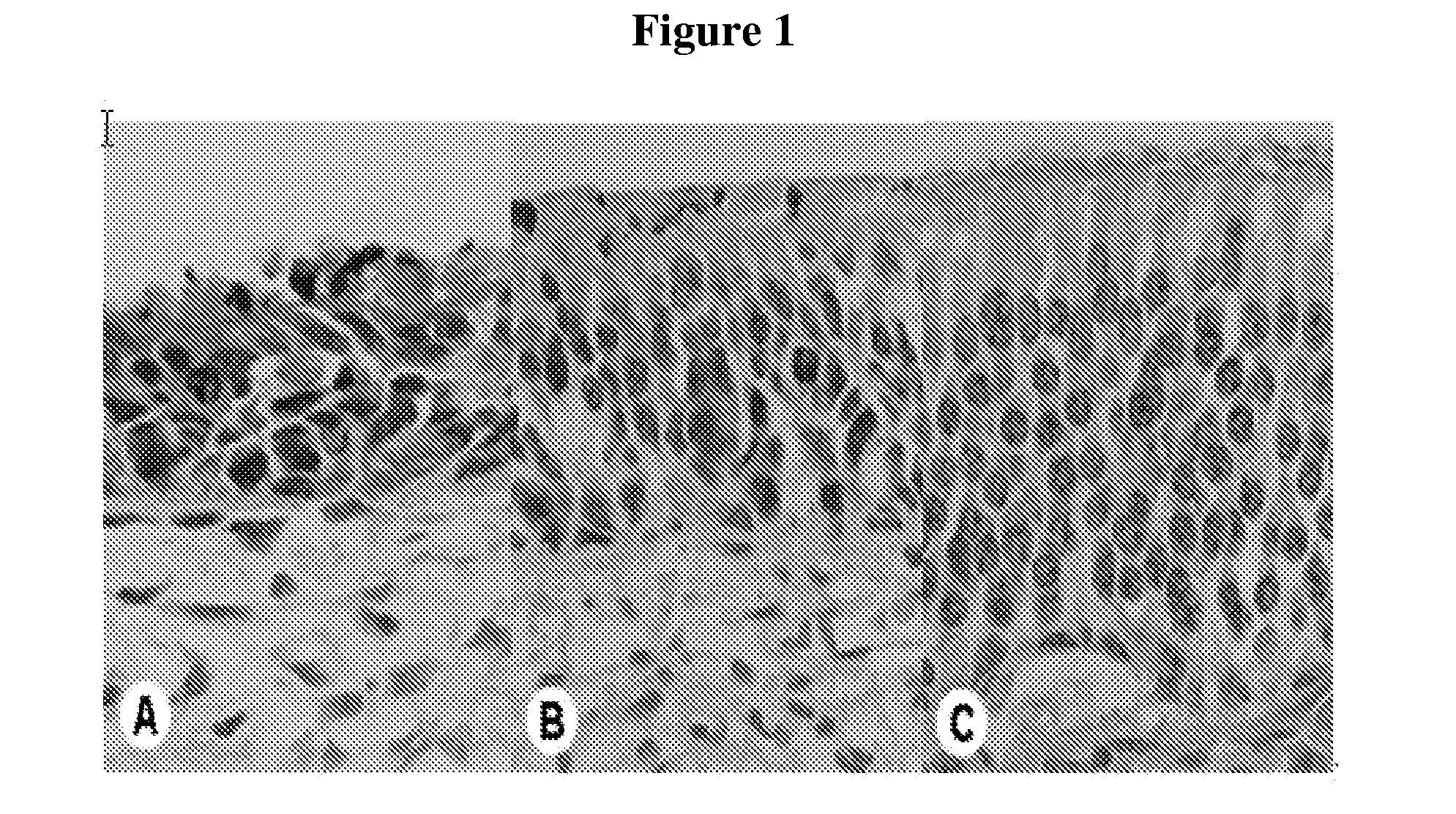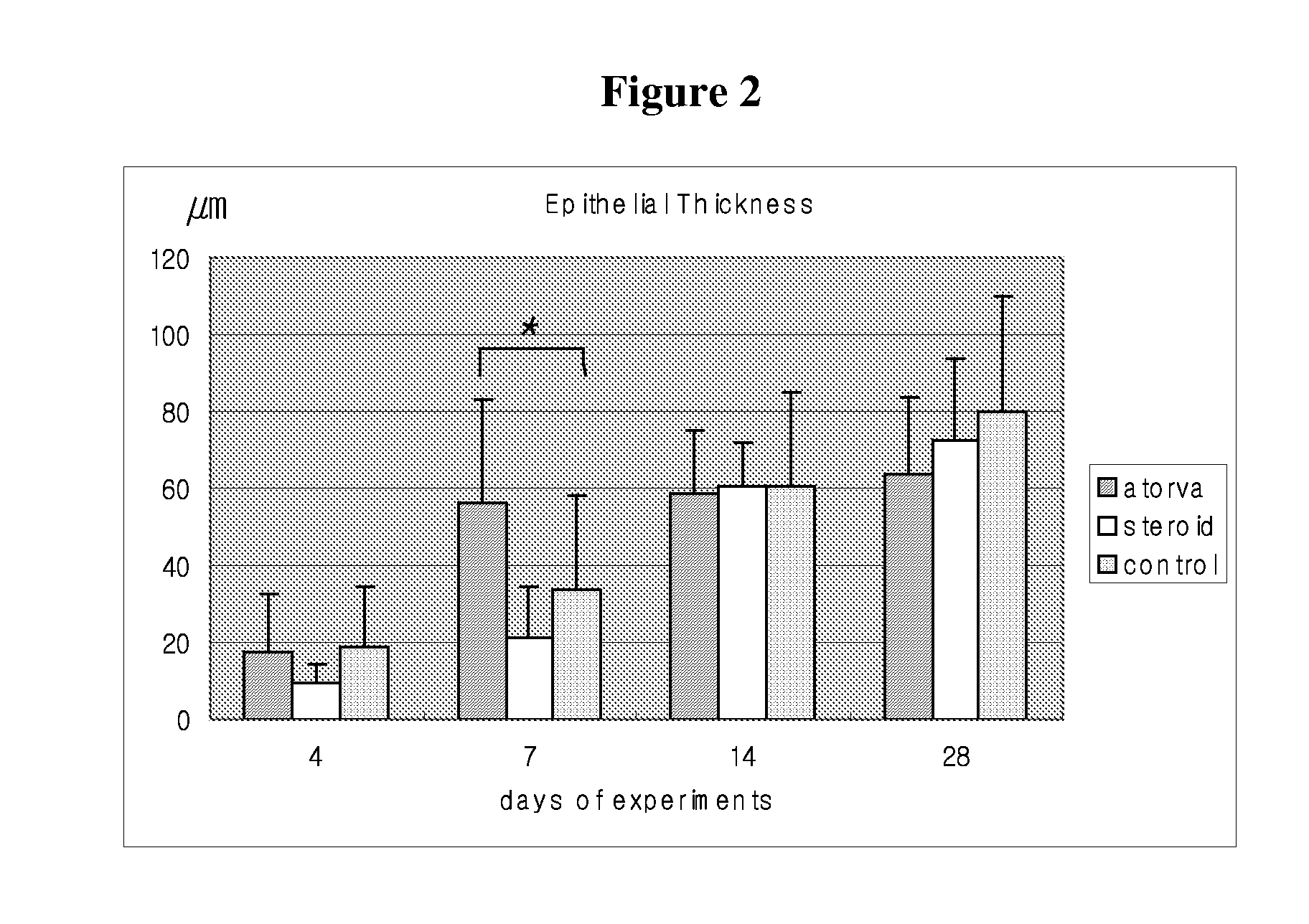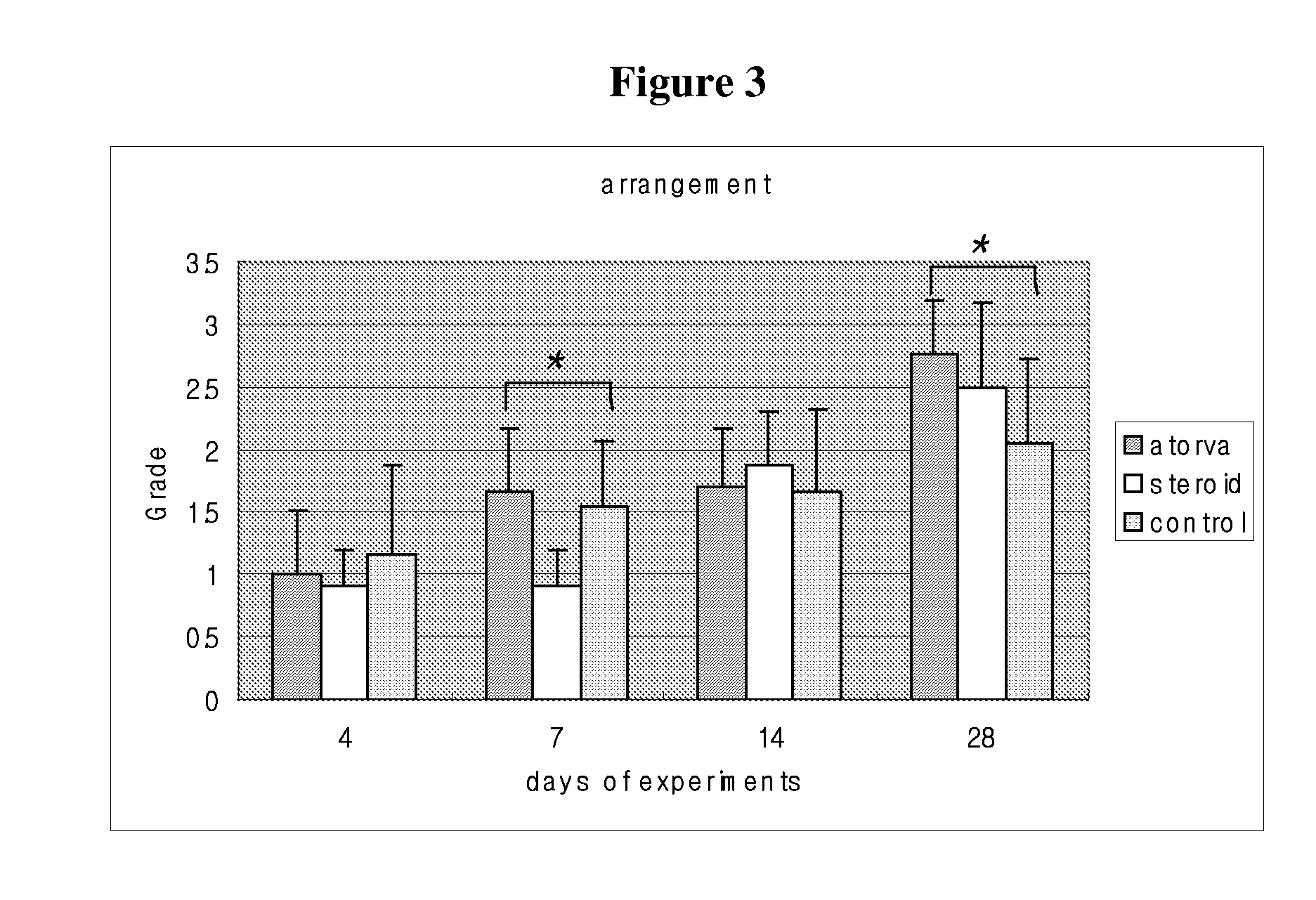Method for treating olfactory disorder
a technology for olfactory disorders and olfactory mucous membranes, applied in the direction of drug compositions, biocide, heterocyclic compound active ingredients, etc., can solve the problems of olfactory changes, olfactory disorders that are not significantly effective for other olfactory disorders, and olfactory mucous membrane regeneration, etc., to achieve the effect of enhancing the regeneration of olfactory mucous membranes
- Summary
- Abstract
- Description
- Claims
- Application Information
AI Technical Summary
Benefits of technology
Problems solved by technology
Method used
Image
Examples
example 1
Preparation of Olfactory Tissue Samples
1-1. Test Animals
[0050]As test animals, female white Sprague-Dawley rats (Orient Co., Korea) having a body weight of 100-150 g were used. The rats were apparently healthy and had a clean nasal cavity. The test animals were raised in raising chambers for one week.
[0051]Each raising chamber was an acryl box including sawdust at the bottom thereof and having window bars at the top thereof for mounting a water container. Three animals were raised in each raising chamber and 72 test animals in total were raised in 24 raising chambers. The test animals were raised under the conditions including a temperature of 21.5-25.5° C., a relative humidity of 45-55%, and a constant lighting cycle of from 7 a.m. to 7 p.m.
[0052]Next, 72 test animals accommodated in the raising chambers for one week were divided into three groups, i.e. a control group to which saline was administered, a reference group to which a steroid was administered, and a test group to which...
example 2
Determination of Regeneration Effect
2-1. H&E Staining
[0062]H&E staining of the tissue obtained from Example 1-2 was performed by treating the paraffin block cut into a thickness of 4 μm via the above trimming and microtomy steps of Example 1-2 with a hematoxylin solution (Zymed, USA) and an eosin solution (eosin Y, Sigma, USA). More particularly, the H&E staining was performed as follows.
[0063]The paraffin block cut into a thickness of 4 μm as described in Example 1-2, i.e. the tissue specimen, was deparaffinized by repeating a xylene treatment cycle (dipping the tissue into 100% xylene twenty times) three times, was subjected to rehydration and staining with a hematoxylin solution for 5 minutes, and then was washed thoroughly with flowing water for 15 minutes. The washed tissue specimen was subjected to differential staining in 0.25% eosin solution for 40 seconds. After the differential staining, the tissue specimen was treated with an increasing amount of alcohol from a lower conc...
PUM
| Property | Measurement | Unit |
|---|---|---|
| body weight | aaaaa | aaaaa |
| thickness | aaaaa | aaaaa |
| pH | aaaaa | aaaaa |
Abstract
Description
Claims
Application Information
 Login to View More
Login to View More - R&D
- Intellectual Property
- Life Sciences
- Materials
- Tech Scout
- Unparalleled Data Quality
- Higher Quality Content
- 60% Fewer Hallucinations
Browse by: Latest US Patents, China's latest patents, Technical Efficacy Thesaurus, Application Domain, Technology Topic, Popular Technical Reports.
© 2025 PatSnap. All rights reserved.Legal|Privacy policy|Modern Slavery Act Transparency Statement|Sitemap|About US| Contact US: help@patsnap.com



